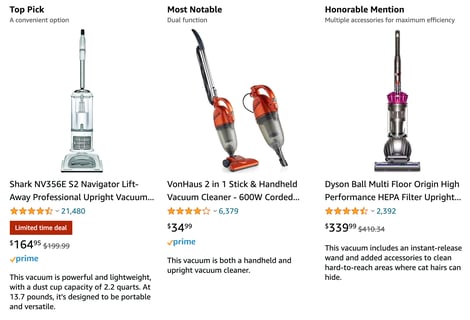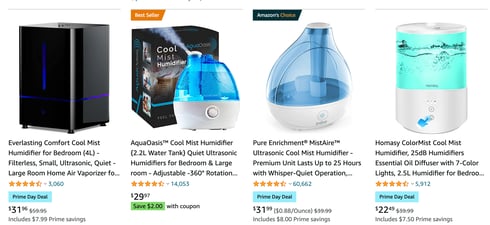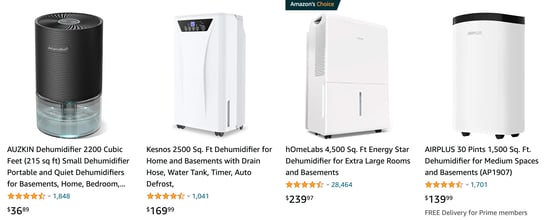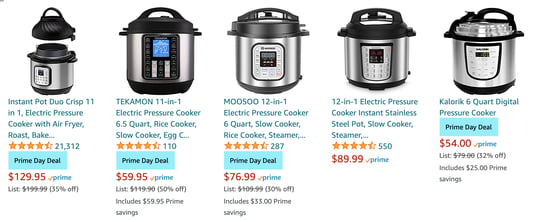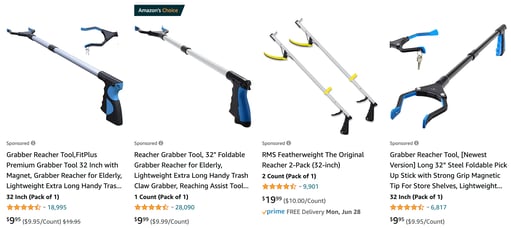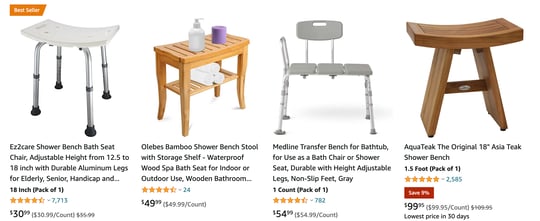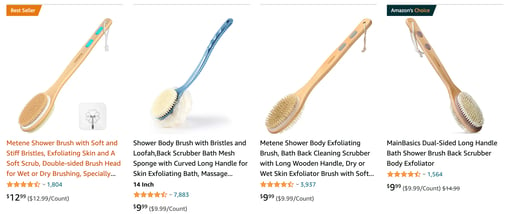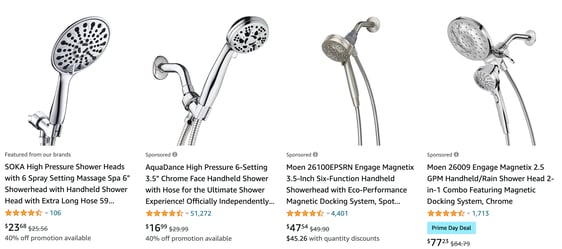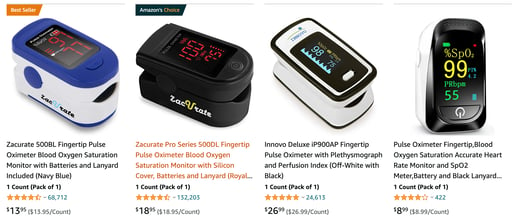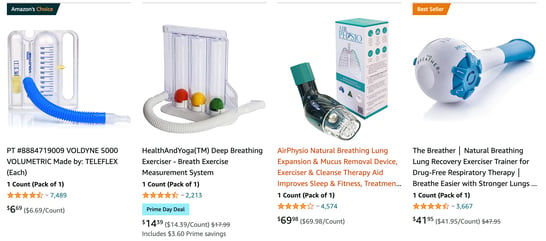
We're all ready to go diving back into supporting our local shops and merchants, but Amazon is just so easy and convenient sometimes! While we absolutely encourage local business support there are some great deals on some items that everyone battling a respiratory illness should have. We tried to pick the items that are going to benefit you the most without breaking the bank!
Items for the Home
Avoiding symptom escalations, also known as exacerbations, is vital to slowing disease progression. One of the most common causes of exacerbation is allergic reactions from dust, pollen, pet dander, and other common allergens found in the home. Clearing clutter, having pets regularly groomed, and dusting regularly will reduce airborne allergens. Cleaning up spills immediately and making sure pipes are in good working order will prevent mold from developing. Also, be sure not to overwater plants. It’s healthier for the plant and for you too!
Regular vacuuming is also essential for keeping allergens down. Amazon has several options for HEPA vacuums. HEPA stands for High Efficiency Particulate Absorption. This means that the vacuum is well sealed and equipped with HEPA filters that will trap small particles, such as dust, allergens, and dander, preventing them from being reintroduced into the air.
Air cleaners to improve indoor air quality can also stave off allergies and even illness. Air cleaners are rated by what is called a CADR scale. CADR stands for Clean Air Delivery Rate. This rating measures the square footage that the machine can effectively clean. It’s recommended that you get a cleaner that is rated for larger than the area that you are trying to clean. This will allow you to run the machine at a lower setting so it will be quieter and ensure that you get effective cleaning.
Electrostatic air cleaners have been popular in the past few years because you do not have to change filters but these are not recommended for respiratory patients. This type of cleaner produces a small amount of ozone which is irritating to lung tissue. Look for HEPA type cleaners instead.
Another environmental factor that can irritate respiratory symptoms is humidity. Humidity, both natural and manmade, can greatly affect breathing. Too much moisture in the air and lack of moisture can be equally problematic.
If airways get too dry, they are susceptible to bronchospasm, bringing on coughing and mucus production. Too much moisture in the air makes it hard to breathe and respiratory patients may feel short of breath, even while at rest. More water means less oxygen in the air making it difficult for those with loss of lung function. According to the American Lung Association, 40% is the ideal humidity rate for respiratory health.
If you live in a dry climate, or your home tends to be dry because of heating and air conditioning, you might consider getting a humidifier. Be sure to follow maintenance directions. Clean the machine and change filters regularly to prevent dangerous mold from forming.
If you live somewhere dry, or you don’t have central air conditioning in your home, you can also get what is called a dehumidifier. Machines are rated like air cleaners, by square footage for which they are effective. They are also rated for pints of liquid per hour they can remove from the air. The larger models are used to clean up flooded homes or businesses from weather events or plumbing problems. Smaller models should be more than adequate to dehumidify average sized homes. Even if you don’t live in a particularly humid climate, you may consider getting a small dehumidifier for the bathroom if you don’t have effective ventilation there. It might help bathing have less of a negative impact on breathing.
Kitchen Items
Mealtimes can also present several challenges for those battling a respiratory disease. A full stomach will push up against the diaphragm making it difficult to breathe. Instead of eating three good sized meals per day it’s recommended that those with COPD or other respiratory conditions eat 5 smaller meals.
Meal preparation can be challenging in two ways. First, it can be tiring with a lot of extra meal prep time throughout the day. Secondly, it can negatively affect air quality in your home. Cooking on the stove top can introduce humidity via steam into the air affecting breathing. It can also cause smoke which is also a common exacerbation trigger. It’s suggested to prepare meals in bulk that can be refrigerated or frozen, and easily reheated later.
Pressure cookers can be invaluable for making mealtimes easier. They shorten cooking time and release much less steam into the air while cooking. Pressure cooking is also very healthy and maintains a lot of nutrients and can make vegetables easier to digest by softening fiber.
Some pressure cookers can also be used for sanitizing masks, spacers, and inhaler holders without the pressurized canisters. Follow the manufacturer’s advice as well as your doctor’s guidance if using for this purpose.
Another item that might be useful in the kitchen, as well as in other places in the home is a reacher, or grabber. Bending over collapses your lung cavity and puts pressure on the lungs and diaphragm, inhibiting breathing, causing shortness of breath. There are several types of reaching gadgets available that can make meal prep and other household chores much less fatiguing.
Bathing Items
Bathing can also be a difficult task for respiratory patients. Many of us are used to showering in the morning and then rushing out into our day. The humidity from the shower, like that from the stovetop or air outside, can make breathing hard, making bathing exhausting. Washing up in the sink in the morning and bathing in the evening before bed might work better for some. There are also some items that might make bathing easier.
Sitting while in the shower can help bathing be less taxing. Shower benches can also prevent slips and falls. Non-slip benches with pockets or shelves for body wash and shampoo are ideal.
As we’ve discussed, bending over and reaching causes pressure on the lungs and diaphragm, causing breathlessness. A shower brush for washing decreases the need for reaching. A removable shower head for rinsing hair without bending over and collapsing your breathing cavity will help bathing be less taxing.
Once you get out of the shower, wearing a terry cloth robe or wearable towel to dry off is less tiring than traditional towel drying. You can also leave the humidity of the bathroom and finish drying in another area.
Medical Devices
Monitoring symptoms is essential for proper disease management. A pulse oximeter is an affordable and easy-to-use device that can provide advanced warning of an exacerbation or additional medical problems that may be developing. A protein called hemoglobin carries oxygen throughout the body to each cell and organ, via the bloodstream. A pulse oximeter fits on your finger and uses light absorption to measure how much oxygen is saturating hemoglobin within the blood.
Don’t use the device in bright sunlight or under a strong lamp, as the stray light may affect the reading. Wearing nailpolish will also affect light absorption readings so be sure nails are bare when conducting the reading.
Most people with normal lung function maintain an absorption level in the mid to high 90’s. Anything above 90% is considered normal. Your doctor or respiratory therapist will let you know what your normal reading should be and at what point you should reach out for help.
Fitness Items
Breathing exercises such as pursed lip breathing, diaphragmatic breathing, and huff coughing are all very helpful for maintaining lung function and keeping airways clear. To slow disease progression, inspiratory muscle exercise is essential. Incentive spirometers and breathing devices with adjustable pressure can be very effective for maintaining and building lung elasticity. If consistently used, tests have shown that breathing exercise devices can improve lung capacity and help diminish lung disease symptoms including shortness of breath and coughing. Damaged lung tissue cannot be repaired but elasticity can be improved if the muscles that assist with breathing are strengthened.
COPD patients often experience muscle loss. Muscle loss contributes to decreased physical endurance and some studies have shown that this contributes to loss of quality of life as much as loss of lung function. As people become less mobile and less active, they are more likely to experience depression or other mood disorders. They are also less likely to maintain proper nutrition and follow their medication regimen. According to GOLD (Global Initiative for Obstructive Lung Disease) maintenance of muscle mass is an integral part of management of respiratory disease.
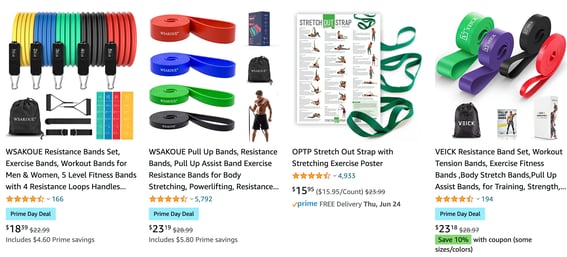 Resistance bands are affordable and they don’t take up a lot of space within the home. Resistance training is lower impact and has a lot less risk of injury than exercising with weights or kettlebells. There are many resistance band exercise routines that can be found on YouTube. As with any exercise program, you should speak to your doctor or respiratory therapist before starting. A study reported in the European Respiratory Journal https://erj.ersjournals.com/content/44/Suppl_58/1909 found that low impact resistance training improved endurance and muscle strength in respiratory patients and the further research was warranted into how it benefited quality of life.
Resistance bands are affordable and they don’t take up a lot of space within the home. Resistance training is lower impact and has a lot less risk of injury than exercising with weights or kettlebells. There are many resistance band exercise routines that can be found on YouTube. As with any exercise program, you should speak to your doctor or respiratory therapist before starting. A study reported in the European Respiratory Journal https://erj.ersjournals.com/content/44/Suppl_58/1909 found that low impact resistance training improved endurance and muscle strength in respiratory patients and the further research was warranted into how it benefited quality of life.
Happy Shopping!
We hope that these items provide a positive impact on living every day with a lung condition! If you have something that you have discovered that you feel has been invaluable for your health or comfort, please share it with others in the comments.

